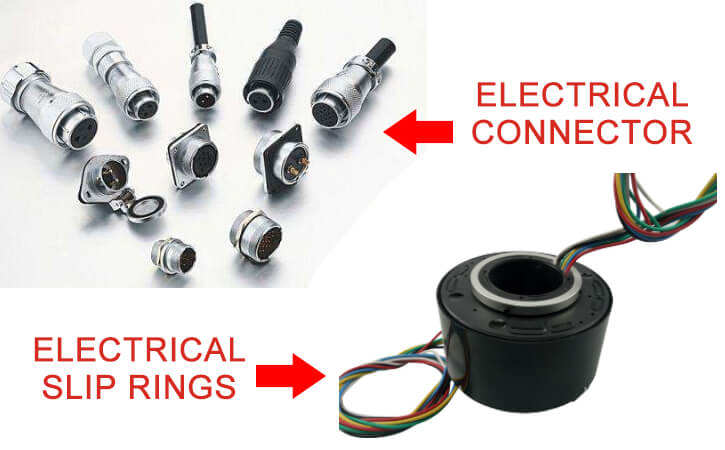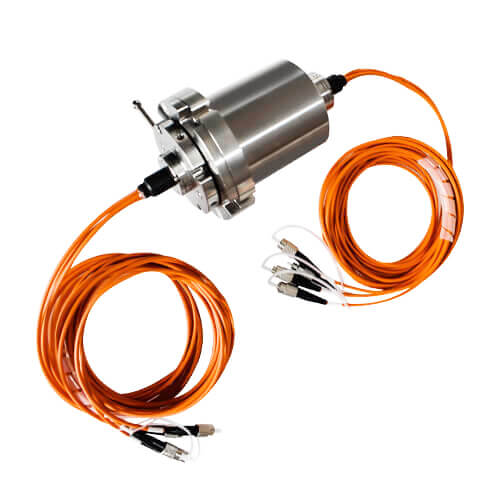In this comprehensive guide, we delve into all critical aspects of connector slip rings – from understanding what they are to discovering their various types, examining how they work, exploring their diverse applications, weighing their advantages and disadvantages, identifying market trends and leading manufacturers, and learning how to choose, maintain, and troubleshoot these essential components.
Introduction to Connector Slip Rings
Connector slip rings, often referred to as electrical slip rings, rotary joints, or swivels, are electromechanical devices that enable the seamless transmission of power, electrical signals, and data between stationary and rotating components within a system. They play a vital role in ensuring the consistent performance of various machinery and electronic systems by overcoming the challenges associated with maintaining electrical connections during continuous rotation.
These devices consist of a stationary brush assembly that comes into contact with a rotating ring assembly, allowing the transfer of electrical power and signals across the interface without the need for additional external connections or physically moving the connection cables. This results in uninterrupted operations and helps prevent wear, tangles, and damage to the electrical wires and components.
The use of connector slip rings has become indispensable across numerous industries. Their significance lies in sustaining critical systems, such as medical imaging equipment, radar systems, wind turbines, and heavy machinery equipment. Through their unique design and function, these slip rings have revolutionized the way electricity is transmitted within rotation-based applications, allowing for advancements in technology and enhancing the functionality of various systems. In the following sections, we will delve deeper into the diverse types of connector slip rings, their working principles, applications, and more.
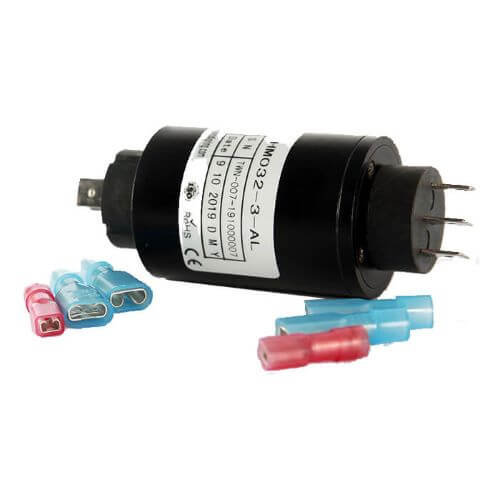
Types of Connector Slip Rings
The widespread application and diverse range of needs in machinery and electronic systems lead to the development of various types of connector slip rings. While they all serve the fundamental function of transmitting power and signals from a stationary component to a rotating one, the design, size, and specific characteristics vary. Let’s explore some prevalent types in the industry:
Miniature Slip Rings
Miniature slip rings, as the name suggests, are smaller versions designed to fit in compact spaces and equipment. Despite their size, these types of slip rings can efficiently transmit signals and power while retaining low contact resistance. They are often used in devices such as closed-circuit cameras, medical equipment, and smaller robotics systems.
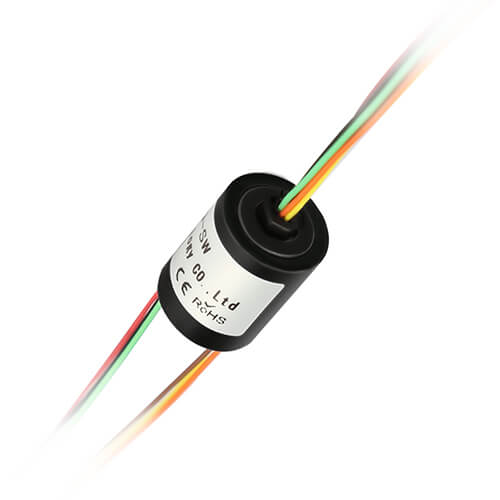
Capsule Slip Rings
Capsule slip rings represent a compact package combining power and signal transfer across a rotating interface. Their versatile design can accommodate multiple circuits, which makes them a popular choice in applications involving audio signals, video signals, data transmission, or combinations thereof, such as in industrial machinery.
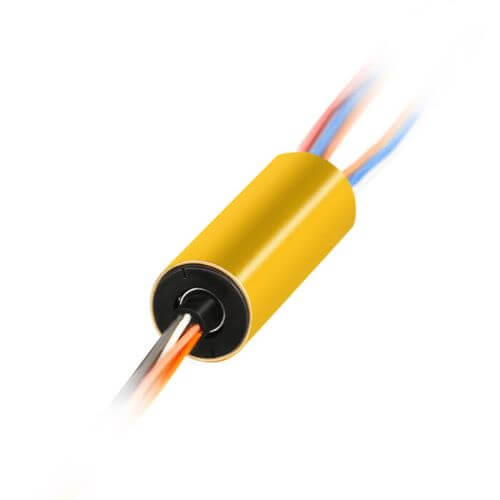
Pancake Slip Rings
Pancake slip rings hold their name from their disc-like, flat design. Unique aspects of pancake slip rings are their thin, flat shape and the placement of the conductive rings in one plane. They are usually used when lengthwise space is restricted, but there is enough room in the axial direction.

Ethernet Slip Rings
In the era of connected technologies, Ethernet slip rings provide a solution for transmitting Ethernet signals across rotating connections. These slip rings are designed with specialized shielding and crosstalk prevention techniques to ensure high-speed communication.
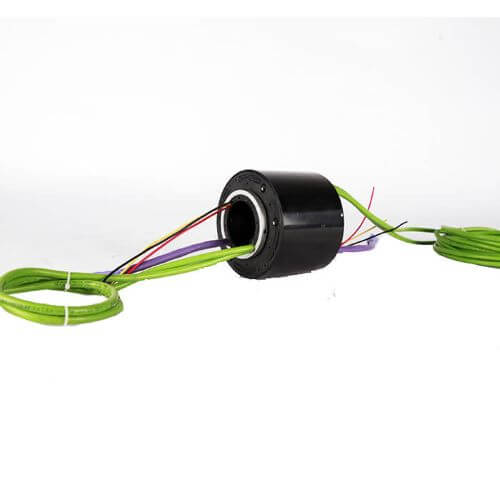
Through Bore Slip Rings
Through-bore slip rings are designed to have a central hole. This design allows for the passage of shafts or other feed-through in the center, making them suitable for applications requiring relative rotation around a central axis.
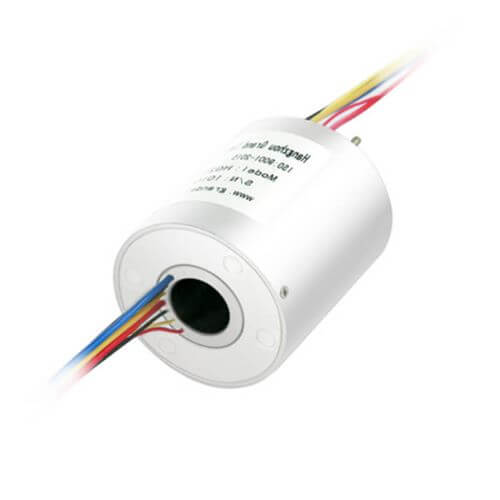
These are only some of the multitude of connector slip ring types available in the market. The choice among them relies mainly on factors like spatial constraints, the system’s complexity, speed, required lifetime, and the specific signals or power to be transmitted. As we advance, we’ll understand how these different types of slip rings work and where they apply in the industry.
How Connector Slip Rings Work
To understand how connector slip rings work, it’s helpful to think of them as bridges. Just as a bridge enables vehicles to cross from one side of the river to the other, a slip ring allows electrical signals and power to pass from a stationary component to a rotating one, and vice versa.
At its very core, a connector slip ring is made of two integral parts: a stationary part, also known as the brush or contact, and a rotating component known as the ring or rotor. Here’s a breakdown of their functionality:
Stationary Component (Brush/Contact)
The brush or contact is a part of the slip ring that doesn’t move. It’s connected to the power source or signal transmitter and maintains constant contact with the rotating component. The brushes are made from a conductive material, often precious metals like gold, silver, or copper, that ensure efficient signal or power transition.
Rotating Component (Ring/Rotor)
The ring or rotor is connected to the part of the machine that needs to rotate while receiving power or signals. As the rotor spins, it maintains a connection with the brush, allowing for continuous transfer of electric currents or signals from the stationary part to the rotating device.
The contact between the ring and brushes allows electricity or data to flow smoothly, regardless of the movement. It’s also important to note the role of housing in slip rings. The housing is a protective casing that shields the slip ring’s internal parts from environmental factors such as dust, moisture, and physical impact, thus ensuring a longer lifespan for the device.
This bridging functionality of connector slip rings eliminates restrictions caused by the movement of machine elements, such as wire twisting, tangling, or breakage. By ensuring a reliable and uninterrupted transfer of power and signals, they enable the smooth operation of machinery and devices in a plethora of industry applications, as we will discuss in the next section.
Applications of Connector Slip Rings
Connector slip rings find applications in various industries ranging from manufacturing to renewable energy, medical devices, and beyond. They are used wherever there is a need to transmit power, signals, or data from a stationary source to a rotating part. Let’s take a closer look at some specific applications across different sectors:
Manufacturing Industry
In the manufacturing industry, connector slip rings are essential for machinery that involves rotating components. This includes equipment such as rotary tables, index tables, and robotics. By enabling the seamless flow of power and data between different parts, slip rings contribute to improved productivity, machine longevity, and operational efficiency.
Renewable Energy
One of the most significant uses of connector slip rings is in wind turbines. The blade assembly of a wind turbine rotates to generate power, which needs to be transferred to the stationary part for distribution. For this, specialized slip rings are used to ensure consistent electricity transmission over long periods, irrespective of weather conditions.

Medical Equipment
In medical imaging devices like CT scanners and MRI machines, the imaging parts rotate around the patient while data is continuously transmitted. Connector slip rings facilitate this transmission without causing any interruptions, which is crucial for generating accurate imaging results.
Military and Aerospace
For devices such as radar antenna systems that require constant rotation while transmitting critical data, connector slip rings play a pivotal role. They ensure smooth, continuous data transfer, thereby providing reliable performance in harsh or challenging environments.
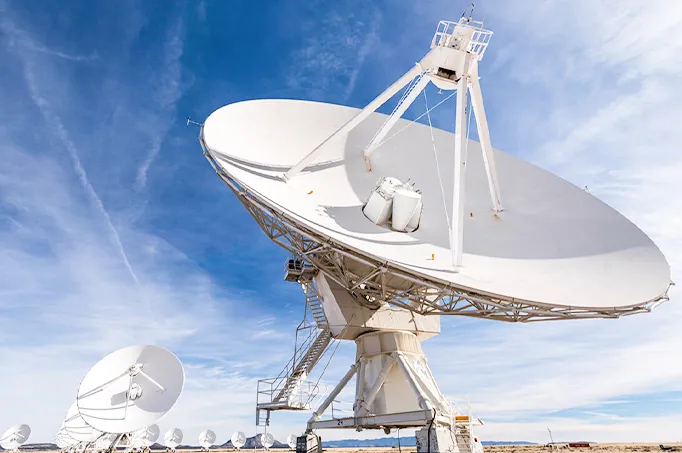
Automotive Industry
In automotive testing and simulation systems, such as steering wheel and drivetrain test rigs, slip rings ensure continuous power and signal transmission during rotation, supporting accurate and efficient testing.
Communications
In satellite and antenna systems that require rotational movement for signal transmission, slip rings facilitate the uninterrupted transmission of data and power.
Given this wide array of applications, it becomes evident that connector slip rings are integral components of many contemporary technologies and are instrumental in driving modern industries forward.
Advantages and Disadvantages of Connector Slip Rings
Like any technology, connector slip rings come with their unique set of advantages and disadvantages. They offer solutions to a myriad of technical challenges but also pose certain limitations.
Advantages of Connector Slip Rings
- Uninterrupted Transmission: The primary advantage of using connector slip rings is their ability to provide continuous signal and power transfer between stationary and rotating parts. This uninterrupted transmission allows machinery and devices to operate more efficiently.
- Versatility: Connector slip rings come in various types and sizes, making them a versatile solution for diverse applications. Whether it’s a miniature slip ring for a compact device or a robust one for industrial machinery, there’s likely a slip ring suited for the task.
- Elimination of Wire Tangle: Slip rings help eliminate the problem of wire twisting, which occurs when continuous rotation is involved. This reduces wear and tear and increases the lifespan of the system.
- Simplified System Design: By removing the need for hardwiring moving parts, slip rings can simplify the design of rotating systems. This can lead to cost savings and improved reliability.
Disadvantages of Connector Slip Rings
- Maintenance Requirement: Due to the physical contact between brushes and rings in most connector slip rings, some friction-induced wear and tear are inevitable. This characteristic means periodic maintenance or replacement is necessary to ensure they continue to function effectively.
- Susceptibility to Environmental Factors: Although many connector slip rings come with protective measures, they can still be sensitive to harsh environmental conditions like excessive dust, extreme temperatures, or moisture, potentially affecting their performance and longevity.
- Limited Bandwidth: For some applications, particularly those calling for high-speed data transfer or high-frequency signals, traditional slip rings might face limitations due to bandwidth constraints. Specialized high-speed data or Ethernet slip rings are usually required in these instances.
Understanding these advantages and disadvantages is crucial in optimizing the use of connector slip rings. Depending on the specific needs of the application, the right balancing of benefits and potential challenges can lead to significant efficiency gains and operational improvements.
Market Trends and Major Manufacturers
The market for connector slip rings is evolving, shaped by technological advancements and the changing needs of various industries. Let’s delve into some of the current trends and prominent players influencing the landscape.
Market Trends
- Miniaturization and High-Speed Data Transmission: As devices become more compact and the need for quicker data transmission increases, the demand for smaller, high-speed slip rings is on the rise. Manufacturers are focusing on developing miniaturized slip rings capable of operating at high frequencies without compromising performance or durability.
- Demand for Robust, Environmentally Resilient Slip Rings: Given their wide usage in outdoor machinery and harsh industrial environments, there’s a growing demand for slip rings that can withstand different weather conditions, and temperatures, and resist dust and moisture.
- Fiber Optic Slip Rings: As the need for high-speed, reliable data transfer escalates, the interest in fiber optic slip rings (FORJs) is budding. FORJs enable the transfer of large volumes of data at high speeds over optical fibers, making them ideal for applications in telecommunications, cable TV, and some military technologies.
- Customizable Solutions: To cater to the diverse application needs, manufacturers are providing more customization and flexibility in their slip ring designs. Tailor-made solutions are being offered to fit specific requirements on size, number of channels, bandwidth, and other performance parameters.
Major Manufacturers
Multiple manufacturers are influencing the slip ring market with their innovative solutions. Here are a few key players:
| No. | Manufacturer | Website |
|---|---|---|
| 1 | Hangzhou Grand Technology | https://www.grandslipring.com/ |
| 2 | Moog Inc. | https://www.moog.com/ |
| 3 | Stemmann-Technik | https://www.stemmann.com/en/home |
| 4 | Schleifring | https://www.schleifring.com/ |
Hangzhou Grand Technology

Hangzhou Grand Technology Co., Ltd. started as a special slip ring manufacturer in 2011. Grown into slip rings, rotary joints, and slip ring assembly experts of today with 6,000 square meter manufacture complex.
Obtained ISO9001, Rosh, CE, and GJB9001B certificates a number of slip rings, rotary joint patents, and proud of our products can meet military grade. Collaborated with universities, institutes, and renowned factories across Asia and Europe including Panasonic, SIEMENS, CSIC, SAMSUNG, HUAWEI, etc.
Moog Inc.
Moog is a leading supplier of high-performance slip rings for various industries, including aerospace. Among their offerings, Moog’s SR Series Slip Rings are designed for the demanding environments of helicopters, excelling in performance, reliability, and customization potential.
Stemmann-Technik
Stemmann-Technik, a part of the Conductix-Wampfler Group, offers a broad range of slip rings, including solutions for helicopters. Their Livietta Slip Ring Assemblies are designed explicitly for harsh and demanding environments in the aviation sector, providing reliable signal and power transmission.
Schleifring
Schleifring is a well-known manufacturer of electromechanical systems, including slip rings customized for various industries. Their Aircraft Slip Rings cater specifically to helicopters, offering robust performance, low wear, and high reliability to meet the challenges of aviation applications.
If you want to know more about other slip ring manufacturers, you can read Top 10 Slip Ring Manufacturers in China, Top 10 Slip Ring Manufacturers In the USA Market 2023, and Top 10 Slip Ring Industry Key Manufacturers 2023.
These trends and manufacturers underline the fact that the market for connector slip rings is a dynamic one, with continuous advancements being made to meet the evolving necessities of different industries.
Factors to Consider When Choosing a Connector Slip Ring
Choosing the right connector slip ring for a specific application can determine the efficiency and longevity of a system. Several factors come into play which make the decision-making process multifaceted. Here are some considerations to keep in mind:
Current and Voltage Requirements
It’s essential to choose a slip ring that can handle the electrical requirements of your application. Consider the current (ampere) and voltage ratings to ensure that the slip ring can safely and effectively transmit the necessary power or signals.
Environmental Factors
Environmental conditions in which the slip ring will operate also significantly impact the choice. If subjected to harsh conditions such as high temperatures, dust, moisture, or vibration, a slip ring with appropriate environmental protection is required. Some slip rings are designed for such challenging environments and ensure extended lifespan and optimum performance.
Quality and Reliability
The quality and reliability of a slip ring affect its performance over time. A high-quality, reliable slip ring may reduce maintenance costs and minimize operational downtime, thus proving more profitable in the long run.
Cost
While it may be tempting to opt for the most affordable option, considering the total cost of ownership can be a more financial-savvy approach. The total cost of ownership includes the initial purchase price, maintenance costs, and any potential downtime or replacement costs over the slip ring’s lifecycle.
Manufacturer’s Reputation
Consider the reputation of the slip ring manufacturer. Reputable manufacturers often ensure strict quality control of their products and are more likely to offer excellent customer service, including technical support and warranties. Researching reviews, customer testimonials, and industry rankings can provide insights into a manufacturer’s credibility.
Customization Needs
Depending on the application, a standard off-the-shelf slip ring may not suffice. If the application requires a specific size, number of channels, or bandwidth requirements, working with a manufacturer that offers customization options would be beneficial.
When evaluating these factors, it’s crucial to focus on the specific needs of your application and prioritize them accordingly. A connector slip ring that balances these requirements effectively will likely be the optimal choice for your system.
Connector Slip Rings Maintenance and Troubleshooting
Like any mechanical and electrical component, connector slip rings also need regular maintenance for optimal functioning. Regular maintenance not only extends their lifespan but can also prevent unexpected breakdowns that can lead to costly system downtime. Besides, troubleshooting is just as essential when problems arise. Let’s delve into the importance of maintenance and some potential troubleshooting techniques.
Maintenance of Connector Slip Rings
Since slip rings deal with both rotational movement and electrical transmission, wear and tear are inevitable. Regular maintenance can mitigate the adverse effects of this wear and tear. Here are some maintenance best practices:
- Ensure Regular Cleaning: Due to their operation in varied environments, slip rings can accumulate dust and other debris over time. Regular cleaning helps prevent damage and enhances the performance of the slip ring assembly.
- Regular Inspection: Periodic inspections can preemptively discover issues such as corrosion, uneven wear, or any other visible signs of damage. Timely diagnosis can enable early treatment, mitigating the possibility of major repairs or replacement.
- Lubrication: Adequate lubrication can reduce friction and prolong the lifespan of slip rings. The use of appropriate lubricants suited to the specific slip ring and its operating conditions can be beneficial in the long run.
Troubleshooting Connector Slip Rings
When issues occur, effective troubleshooting can save both time and resources. Here are some troubleshooting tips:
- Check for Visual Signs of Wear or Damage: Physical inspection can reveal problems like excessive wear, dust accumulation, burn signs, or any visible damage. These signs can guide you to the necessary remedial actions.
- Test Electrical Connections: Use a multimeter to check for continuity and voltage. This test can assist you in spotting any electrical irregularities that might be causing problems.
- Address Lubrication Issues: In case of excessive heating or unusual noise, consider checking the lubrication. Inadequate lubrication could be the culprit behind these issues.
- Consult the User Manual or Technical Support: The user manual can be a great help when troubleshooting, as it often contains solutions to common problems. If the manual doesn’t help, don’t hesitate to contact the manufacturer’s technical support.
Upkeep and troubleshooting of connector slip rings are vital aspects of their lifecycle. Careful consideration and implementation of recommended practices can ensure their reliable operation and contribute toward the overall success of your system.
Conclusion
Get a quick rundown of all critical takeaways from the guide, leaving you with a grounded understanding of connector slip rings.
Immerse yourself in the world of connector slip rings as we navigate through each of these topics, equipping you with knowledge and practical wisdom.
FAQs about Connector Slip Rings
Understanding connector slip rings may prompt various questions, as it’s a specialized area. Here are some commonly asked questions and their answers to help broaden your understanding of these crucial components:
Q1: What is a connector slip ring?
A connector slip ring is a device that enables the transmission of power and electrical signals from a stationary component to a rotating one. These slip rings are used in a variety of equipment, such as wind turbines, medical CT scans, or industrial machinery, where a 360-degree rotation is needed without impairing the connectivity.
Q2: How does a connector slip ring work?
Connector slip rings work by making connections via sliding contact. The stationary part typically brushes and maintains contact with the rotating part, usually the rings. As the ring turns, electrical current or signal is transferred through the brushes to the rotating structure, ensuring continuous power or data transmission.
Q3: Why are slip rings important in electrical machines?
Slip rings are crucial in electrical machines as they allow for uninterrupted power or signal transmission during rotation. They help prevent issues like wire twisting or breakage that are common in rotating systems. This promotes the efficiency and longevity of the machine.
Q4: What are the different types of slip rings?
There are various types of slip rings, including capsule slip rings, pancake slip rings, fiber optic rotary joints, and Ethernet slip rings, each serving different application needs. The types refer mainly to their structure, material, or the specific signal they are designed to transfer.
Q5: Does a slip ring need regular maintenance?
Yes, slip rings do require regular maintenance. This usually involves regular cleaning, inspection, and lubrication to mitigate wear and tear and prolong the lifespan. The specific maintenance requirements might vary based on the type and application of the slip ring.
Q6: What should I consider when choosing a slip ring?
When choosing a slip ring, consider factors like current and voltage requirements, environmental conditions in which it will operate, quality and reliability of the slip ring, cost, manufacturer’s reputation, and any specific customization needs.
See What We Can Do

